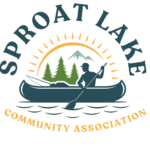Resources
Volunteers Needed!
Together we can make a difference and contribute to the betterment of our community!
Together we can make a difference and contribute to the betterment of our community!
Copyright © 2025 Sproat Lake Community Association. All Rights Reserved

This Site Uses Cookies
By using this Website you agree to our use to Cookies to deliver a better website experience. Learn More.